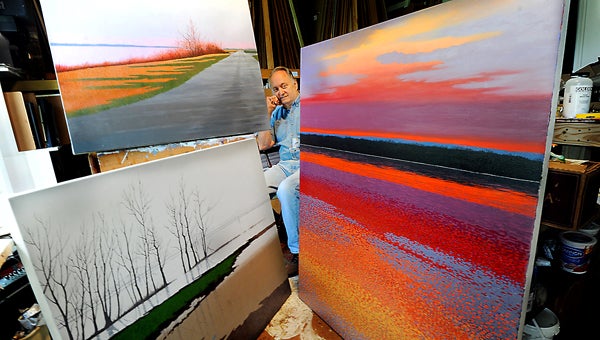Our stories are down here somewhere
Published 12:16 am Friday, April 8, 2011
Watching the sunset over the Mississippi River from the bluffs may be on many people’s lifetime checklist, but if you want to see something truly spectacular, I would recommend watching a storm roll in from Louisiana.
Of course, watching an electrical storm in such an open landscape can be highly dangerous — some might call it foolish. I have braved the weather a few times since I have lived here for a chance to get a photo. I tried to do the same Monday afternoon as I stood with a couple of tourists from Tennessee watching the rain pick up speed as the winds whipped across the river.
Making small talk, I asked the lady filming the storm with her video camera, whether they have been enjoying their visit.
“Yes,” she remarked. As to be expected, she mentioned the beautiful houses and the spring flowers. “We have especially loved hearing all of the stories,” she continued.
I gave little thought to her comment as I tried to stay focused on that elusive lightning shot.
Within moments all three of us fled the gazebo to the safety of our cars. As I attempted to stay ahead of the rain, I heard a voice from across the road.
“You can come up here,” Jim Coy said from the balcony of Bontura, an antebellum house that sits on Broadway street.
Thinking this would be a great place from which to photograph, I leapt at the chance to remain dry, but by the time I reached the balcony the rain fell so hard that any view had since disappeared.
I noticed that Dr. Coy was the only person around. “Everyone else is in the cellar,” Coy said. “Would you like to go down and see?”
“Definitely,” I replied.
Always ready with a story, Coy related the history of the cellar in the house on the way down.
It turns out the basement in Bontura was one of the first authorized in town. “For years, people were afraid to dig cellars,” Coy said.
Jumping to conclusions, I assumed people were afraid because of the unstable loess soil, especially around the bluffs.
According to Coy, people thought that disturbing the soil would increase the risk of yellow fever. As a result, homeowners were forbidden to dig.
There in the small underground room were six other people waiting out the storm.
For the next few minutes, I would hear more recent stories of family and friends huddled together waiting out far more serious storms than the one that passed over Monday.
Just hearing the stories confirmed what the tourist from Tennessee mentioned earlier. History indeed comes to life in stories.
Thankfully, many involved in Spring Pilgrimage have learned this too.
Recent changes to the Historic Natchez Tableaux are gaining much publicity. From a more authentic depiction of the life among the Natchez Indians to greater revelations of the life of Varina Howell Davis after the Civil War, the tableaux emphasizes story over spectacle. The tableaux even tells the story of how Spring Pilgrimage was born.
In houses like Magnolia Hall and the House on Ellicott’s Hill re-enactors not just show historical artifacts, they tell the tales of the people who made, used and lived with these artifacts.
Evidently tourists are taking notice — that Natchez is not just a dusty collection of old structures but a town filled with fascinating stories.
And as I remembered Monday afternoon, the stories that make Natchez wonderful are behind every door and down every stairwell. Sharing them among ourselves and with our visitors is vital to our ongoing life in Natchez.
Ben Hillyer is the design editor of The Natchez Democrat. He can be reached at 601-445-3540.



